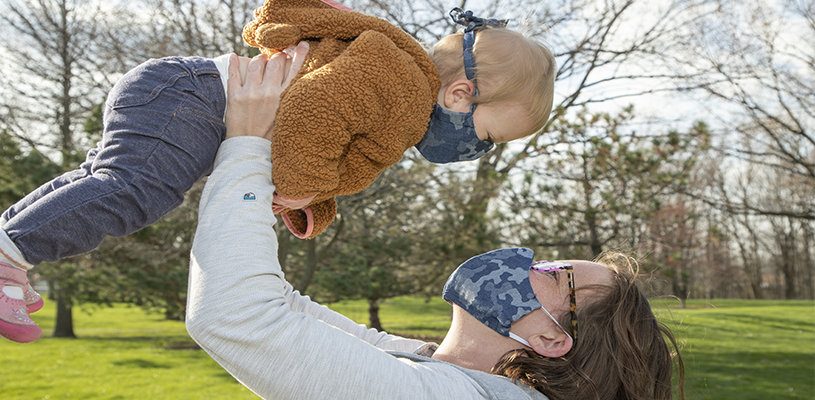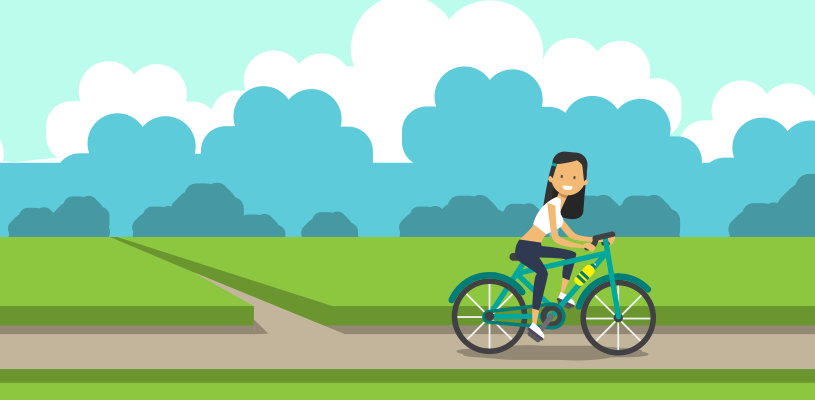Public parks and the pandemic: Avoiding a standoff between city residents and officials

As cities struggle to contain the spread of COVID-19, the question of how to manage crowding in public parks has become critical. With spring weather on the horizon, many municipalities are considering increasing restrictions on public parks to prevent crowds. Horrified citizens are begging for outdoor spaces to stay open for their sanity.
In many cities, residents and officials appear to be heading for an impasse. But there is a way that we can sidestep this standoff. In order to remain a physically, mentally, and emotionally healthy society, both sides need a new perspective on public parks during this pandemic.
Green Space and Survival
Having spent time in multiple crisis zones, I can say from experience that prolonged confinement is exceptionally difficult and the psychological toll is very real. I have lived with gunfire outside my window every night for months at a time. I have worked in places with a ubiquitous threat of kidnapping and terrorism, with cholera, and with intense violence. I am a seasoned and resilient field researcher with ample experience with confinement due to system-wide security crises. Yet, in every single one of these places, I have needed to walk in green space.
There were times that the psychological effects of prolonged confinement were so severe that my mind simply could not cope. I needed air and sunlight. And so, I walked outdoors for a few minutes to look for some green life growing from the ground. Within moments, I could breathe. The storm welling up inside me calmed down. These few breaths of fresh air proved essential for my long-term mental and emotional wellness while living under sustained disaster conditions. I have come to understand green space as an unparalleled cure for emotional distress during crises.
It is therefore with a great sense of urgency that I call on both citizens and officials to work cooperatively on a compromise regarding our public parks during this pandemic. If we are to succeed, each side must approach this situation with a new perspective.
For Residents
For city residents who have never experienced a disaster, isolation and quarantine is new and difficult. City parks are one of the last sources of respite from the miseries of confinement, constant screen time, and crippling boredom.
Yet, herein lies the conundrum. If everyone gets up and goes to the park at the same time, it is a recipe for disaster. If parks become crowded, officials may decide to close them entirely, and residents will lose a critical mental health resource that they need to get them through this pandemic.
There is a solution, but it requires a mental shift. As citizens, we are used to seeing public parks as free and unlimited leisure spaces. But this is not peacetime. In the height of this emergency, the best way to understand our public parks is as rationed mental health spaces.
In the weeks and months ahead, continued access to these green spaces will be critical for wellness. It is therefore essential that we quickly demonstrate that we can cooperate and share our outdoor spaces responsibly. In practical terms, this means that each of us needs to limit our park time so that others can have a turn. For a normal adult, I have found that 20 minutes outdoors is enough to mitigate the intense pressures of confinement. That is actually a decadent daily ration for a disaster situation. You might be used to more and you might want more, but it is unlikely that you actually need more.
Next, if you have access to private green space in a backyard, it is good citizenship to let other, more desperate families use public parks. This does not mean you can never use a park, but consider how you might be affecting someone who has nowhere else to go. If you have trees and fresh air on your own property, then let the family in a high-rise take their 20 minutes in a park today. Try not to stress the limited common space that others rely on for their survival.
This does not mean that everyone in a high-rise can spend the day outside. Even if the park is your only green space, it is still a limited and shared resource. Extending walks and outdoor activities beyond what you actually need is like taking more than your ration of our shared green space. The last thing we need is a tragedy of the commons, in which everyone overgrazes and then we are left with nothing. To ensure our continued access to parks, everyone must demonstrate personal responsibility and limit consumption of our shared green space.
These suggestions might feel upsetting because they feel like yet another thing is being taken away from you, after so much has already been taken away. Take heart. This is not a starvation diet. The outdoors are not like food or sleep. If you take a walk through the park for 20 minutes instead of two hours, you are not going to wither away.
Rather, parks are a highly effective mental health tool and you can actually get their full benefits with a fairly modest dose. Even if you love the outdoors as much I do, you do not actually need hours of time in the park every day in order to maintain your mental health during a disaster. That is just silly. Short and regular doses of green space will do the trick perfectly well. Your mind and body will adjust to this new pandemic-friendly approach to shared green spaces, and you can feel well and stable in the weeks and months ahead.
For Officials
Most cities have now taken extraordinary measures to prevent the spread of COVID-19. Our emergency workers, public health officers, and civil servants are working tirelessly to avoid a systemic catastrophe. Naturally, city leaders feel they must do everything in their power to prevent the reckless spread of this virus. As spring approaches, some municipalities are therefore considering further restricting parks to prevent crowding.
The problem with this approach is that it may undermine community resilience and actually increase non-compliance with COVID-19 emergency orders. The success of our physical distancing measures depends on widespread public cooperation and buy-in. We cannot roll military tanks through the streets to enforce stay-at-home orders. Citizens need to believe in the system, and they need to believe that they can do what is asked of them without losing their minds.
A better strategy is possible. First, it is critical that cities create more space for people to walk around safely. As much as possible, cities should open streets to pedestrians only. Limit car traffic and give people extra room. This will prevent a vicious cycle. Limiting space creates more crowding, which leads to more space restrictions, which leads to more crowding. In order to maintain public cooperation, the solution is to create more walkable space anywhere and everywhere it is possible. If more people have access to a physically safe and pleasant street walk, this will also reduce pressure on the parks. This strategy will pay dividends in ensuring public cooperation for the long haul of this crisis.
Second, city leaders need to communicate exactly how residents should be using public parks at this time. Help them to understand public green spaces as a shared and limited mental health resource. This is a completely new framing, and leaders need to help people learn how to approach the parks in this way. Most citizens are trying to cooperate with public health guidelines, but they are also frustrated and confused by some of these restrictions. It would also be helpful for health officials to help people understand that they do not actually need hours of time in city parks in order to stay emotionally well during this pandemic. Short and regular walks through green space will do the job, without worsening the crisis and thus forcing us inside for even longer.
Third, city leaders should strongly encourage businesses to be flexible with work-at-home hours so that people can take time outdoors at different intervals. Many people are trying to force their at-home work lives into neat nine-to-five boxes that replicate their regular schedule. While I understand this urge for normalcy, this approach also means more people going outdoors during peak times in the late afternoons and weekends. Businesses can help by allowing flexible work hours at home, thus allowing people to schedule their outdoor wellness time at non-peak hours. This way, emergency and essential workers who have less flexibility can enjoy a park on a Saturday without the unnecessary crowds.
The more citizens feel like they have control over their own mental health by taking a safe walk outdoors, the better overall social cooperation we will have for the full duration of this crisis. If cities create more walkable spaces, communicate well, and encourage more flexibility for families, they will improve overall cooperation and camaraderie. People will learn how to adjust, happily and healthily.
The last thing we need are cities full of people pushed to the brink, raging at their municipal leaders, and too emotionally exhausted to stay the course. This is a marathon, and we need our whole team to stay strong, healthy, and motivated to defeat COVID-19.
Cooperation is Critical
Everyone wants to emerge from this crisis physically, mentally, and emotionally healthy. When it comes to securing our shared green space, a new approach is possible. Once we understand parks as rationed mental health spaces, rather than unlimited leisure spaces, we will start to measure our personal use in a reasonable, sustainable way during this crisis. By embracing this new perspective, we also make it easier for city officials to keep our parks open throughout the course of this pandemic, and will encourage them to make even more space available. This essential cooperative approach requires all of us to make a commitment – as a team – to reimagine how we use our parks.
I will close with a secret I learned through other hardships. There is also a hidden blessing in this disaster approach to green space. When you adopt this perspective, it will create a radical shift in how you experience the outdoors. Your very breath will change. Your will feel your heartrate slow and your eyes widen. You will experience trees and grass in a completely new way. It is strange and sublime, and so very unlike how we normally see our cities. You may never get another chance to see the world with these eyes. Let go of your old expectations, ideas, and wants about your neighbourhood park. Look now, just for a short moment. It is harrowingly beautiful. MW
✯ Municipal World Insider and Executive Members: You might also be interested in Kathleen Reinheimer’s article: Making magic in Coquitlam parks: The alchemy of civic pride. Note that you can now access the complete collection of past articles (and more) from your membership dashboard.
Aisha Ahmad is an Assistant Professor of Political Science at the University of Toronto and the author of the award-winning book, Jihad & Co. – Black Markets and Islamist Power (Oxford University Press, 2017).
Related resource matericals:


